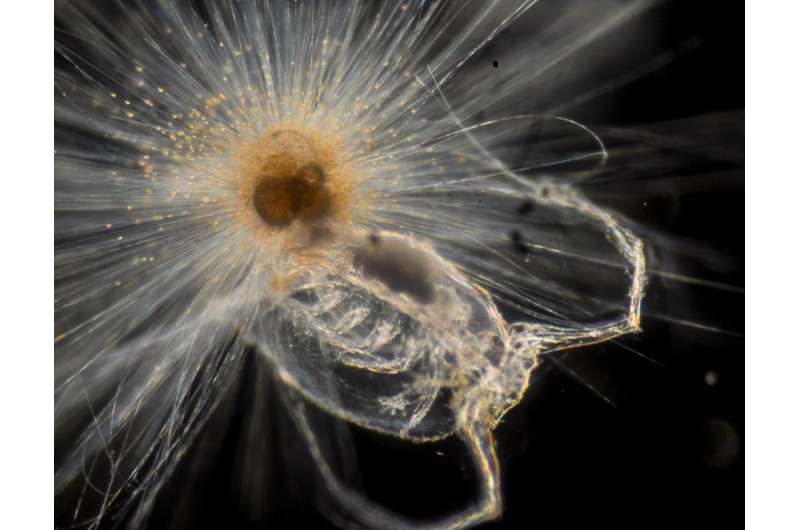New study of plankton shells overturns decades-old understanding of their formation and chemistry

The results of new international research into tiny marine plankton will allow scientists to more precisely estimate past ocean conditions and predict future changes, and suggests global warming may have a bigger impact on shell-bearing plankton than previously thought.
Tiny marine plankton, foraminifers, record information about the environment in which they grew in the chemical composition of their carbonate shells. Foraminifer shells are one of our most important climate archives. Reading these archives correctly is key to understand past and to predict future climate.
Researchers from Macquarie University, the GFZ German Research Centre for Geosciences in Potsdam and The Australian National University have used transmission electron microscopy to examine ultra-thin slices of these shells, to understand how the shells record ocean conditions.
"Magnesium found in the plankton shells, for example, is used to calculate seawater temperatures going back tens of millions of years," said lead researcher Professor Dorrit Jacob, of Macquarie University's Department of Earth and Planetary Sciences.
"Understanding how the shells develop is key to understanding how magnesium and other elements get into the shells, and therefore how we read the shells' climate records."
As published in Nature Communications, the team found these plankton shells first form as the unstable carbonate vaterite, which eventually transforms into stable calcite.
"This was a big surprise. Since the 1950s, we've thought the shells were made directly of calcite – and this is what we have been teaching students to this day," stated Dr. Jacob.
"Which type of carbonate forms first, vaterite or calcite, determines how much magnesium is incorporated into the shell. This finding about how foraminifer shells form will now enable us to estimate past ocean temperatures more precisely, and more accurately predict future climate change."
The presence of unstable vaterite in these abundant organisms also means foraminifer shells may be far more susceptible to ocean acidification than previously thought. This could have drastic ramifications for carbon dioxide transfer to the deep ocean and seafloor in the marine carbon cycle, as foraminifer shells are dense and assist rapid sinking of organic matter.
More information: D. E. Jacob et al, Planktic foraminifera form their shells via metastable carbonate phases, Nature Communications (2017). DOI: 10.1038/s41467-017-00955-0
Journal information: Nature Communications
Provided by Macquarie University



















